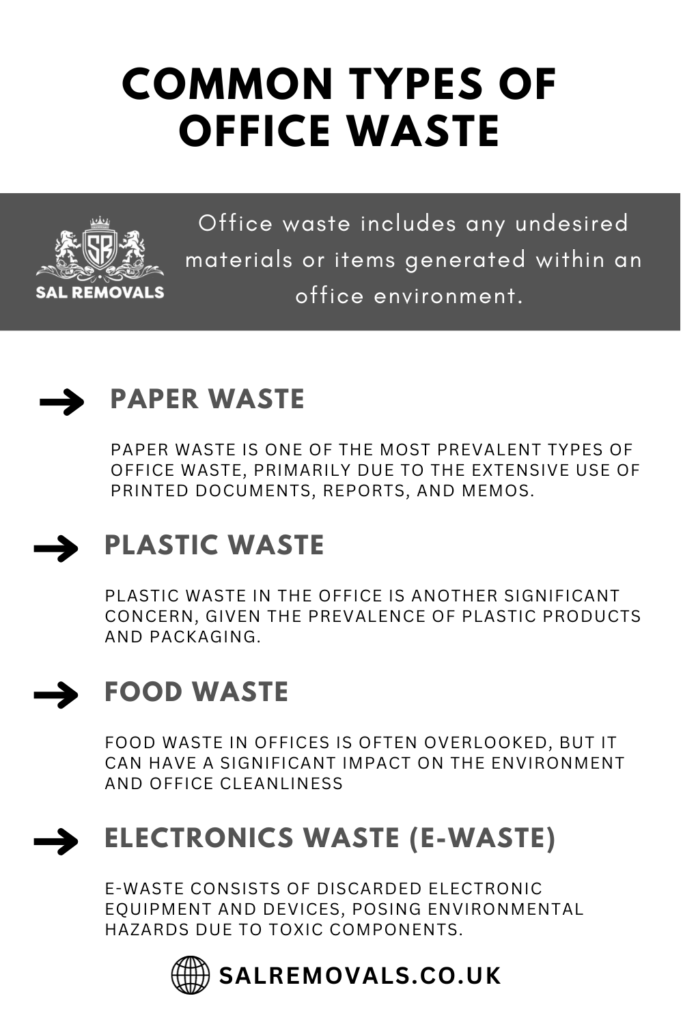In the fast-paced world of modern business, offices have gained notoriety as prolific generators of waste. From discarded documents to outdated electronics, the types of waste produced in an office setting are both diverse and abundant. Effective office waste management is not only essential for maintaining a clean and organized workspace but also plays a vital role in environmental responsibility. In this article, we will delve deep into the most common types of office waste, exploring their origins, methods for waste clearance in London, and recycling options. Let’s embark on a comprehensive journey to comprehend and address the issue of office waste.
Definition of Office Waste
Office waste includes any undesired materials or items generated within an office environment. These materials can result from routine office activities, including paperwork, electronic equipment, and common consumables like food and plastics. The challenge with office waste lies in its ability to accumulate rapidly, leading to clutter and harming the environment.
Importance of Office Waste Management
Efficient office waste management is crucial for various reasons. Firstly, it helps reduce the environmental footprint of the office, making it more sustainable. Secondly, proper waste management improves workplace hygiene, reduces clutter, and can even lower operational costs. Understanding and addressing the common types of office waste allows companies to decrease their environmental impact while maintaining an efficient and organized office environment.
Common Types of Office Waste
Paper Waste
Paper waste is one of the most prevalent types of office waste, primarily due to the extensive use of printed documents, reports, and memos.
Sources of Paper Waste in Offices
- Printing: Excessive printing of documents and emails.
- Obsolete Files: Accumulated outdated documents and files.
- Misprints: Unwanted printouts due to errors.
- Packaging: Excessive paper packaging materials.
Strategies for Reducing Paper Waste
a) Digitalization: Encourage the use of digital documents and emails to reduce the need for printing.
b) Double-Sided Printing: Set printers to default to double-sided printing to save paper.
c) Paperless Meetings: Promote paperless meetings and presentations by using digital tools.
Recycling Paper Waste
Implement an office-wide paper recycling program. Place dedicated recycling bins for paper waste, ensuring that employees understand the importance of recycling and follow the guidelines.
Plastic Waste
Plastic waste in the office is another significant concern, given the prevalence of plastic products and packaging.
Sources of Plastic Waste in Offices
- Disposable Tableware: Plastic cutlery, plates, and cups used in the office cafeteria.
- Packaging Materials: Plastic packaging for office supplies and shipments.
- Single-Use Bottles: Plastic water bottles and beverage containers.
- Stationery: Plastic pens, markers, and folders.
Strategies for Reducing Plastic Waste
a) Reusable Items: Replace disposable tableware with reusable alternatives.
b) Minimize Packaging: Choose office supplies with minimal plastic packaging.
c) Water Coolers: Provide water coolers or filtered water stations to reduce single-use bottle consumption.
Recycling Plastic Waste
Set up separate containers for plastic waste in the office. Ensure that plastics are properly sorted and sent to a recycling facility.
Food Waste
Food waste in offices is often overlooked, but it can have a significant impact on the environment and office cleanliness.
Sources of Food Waste in Offices
- Cafeteria and Kitchen: Leftover food from cafeterias or employee kitchen areas.
- Meeting Catering: Excess food from meetings and events.
- Expired Snacks: Discarded expired snacks and perishables.
Strategies for Reducing Food Waste
- Portion Control: Encourage employees to take only what they can consume.
- Donations: Consider donating excess food to local charities.
- Composting: Set up a composting system for food scraps and organic waste.
Electronics Waste (E-Waste)
E-waste consists of discarded electronic equipment and devices, posing environmental hazards due to toxic components.
Sources of E-Waste in Offices
- Obsolete Electronics: Outdated computers, monitors, and printers.
- Accessories: Discarded cables, chargers, and peripherals.
- Mobile Devices: Old smartphones and tablets
Strategies for Reducing E-Waste
a) Proper Disposal: Arrange for responsible e-waste disposal through certified recyclers.
b) Upgrades: Encourage employees to upgrade and repair electronics instead of discarding them.
c) Donate or Sell: Consider donating or selling functional but unwanted electronics.
Recycling E-Waste
Coordinate with e-waste recycling facilities to ensure that outdated electronics are properly recycled or refurbished.
General Office Waste
In addition to the specific types mentioned above, general office waste comprises miscellaneous items that accumulate over time.
Sources of General Office Waste
- Packaging Materials: Cardboard boxes and packing materials.
- Old Furniture: Discarded office furniture and fixtures.
- Unwanted Supplies: Unused stationery, outdated calendars, and promotional materials.
Strategies for Reducing General Office Waste
a) Reuse and Refurbish: Consider reusing or refurbishing office furniture and fixtures.
b) Inventory Management: Maintain an efficient inventory system to minimize excessive supply orders.
Conclusion
In conclusion, a comprehensive understanding and effective management of the most common types of office waste are essential for establishing a sustainable and environmentally responsible workplace. By implementing strategies to reduce and recycle paper waste, plastic waste, food waste, electronics waste, and general office waste, organizations can make a significant positive impact on the environment while maintaining a cleaner, organized, and cost-effective office space.
Organizations should cultivate a culture of waste reduction and responsible disposal. By doing so, they not only reduce their environmental footprint but also set an example for employees and customers, promoting a greener and more sustainable future. Office waste management is not just about eliminating clutter; it is about effecting a positive change in the way we operate and interact with our environment.
In the face of growing environmental concerns, companies must take the lead in mitigating the impact of office waste. By making conscious choices and implementing responsible waste management practices, workplaces can contribute to a healthier planet and a more sustainable future for all.
So, let’s all do our part in minimizing the most common forms of office waste and ensuring a cleaner, greener, and more environmentally friendly workplace. Together, we can make a significant difference in the way we manage waste in our offices, all while creating a positive impact on our planet.









